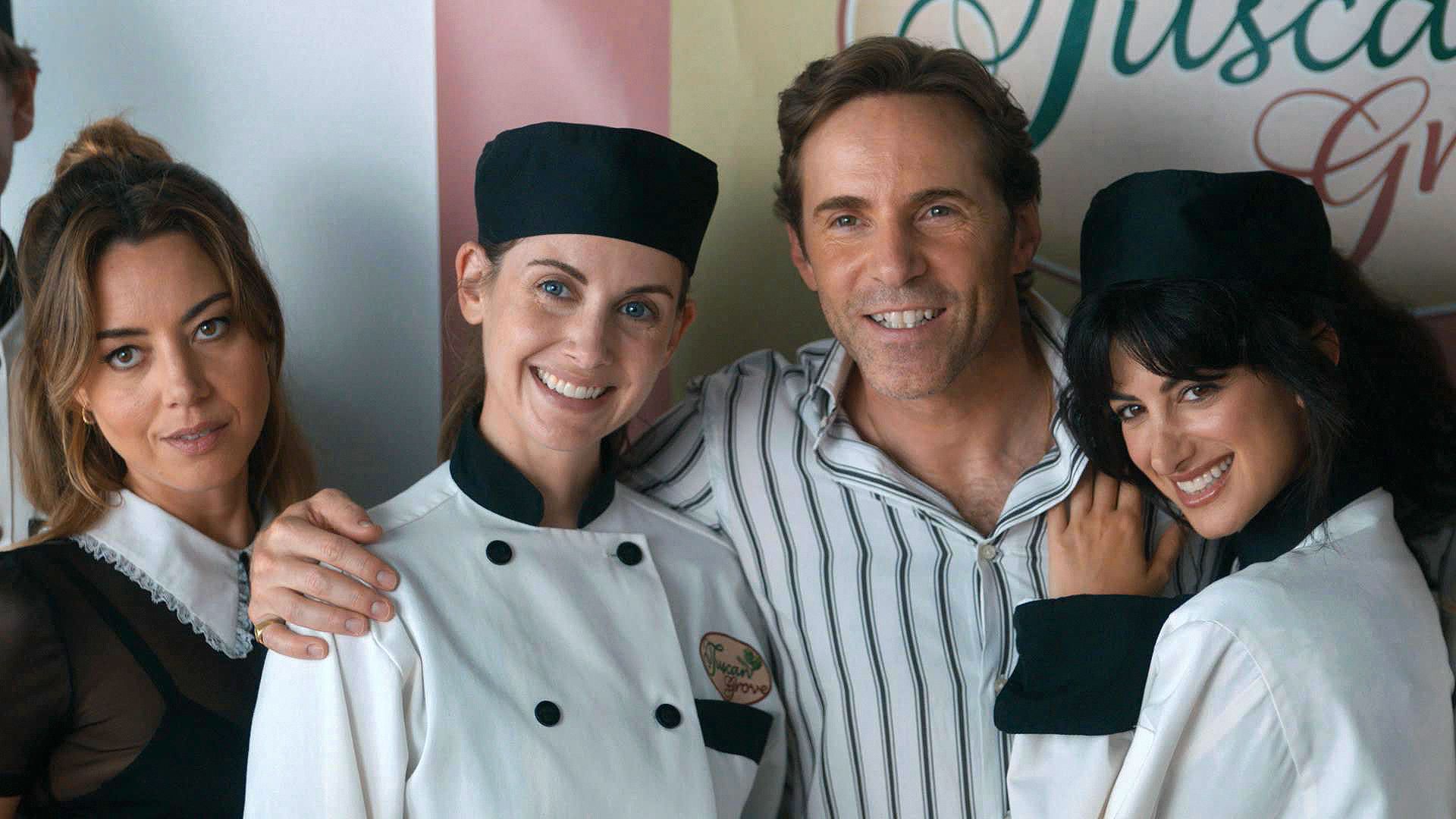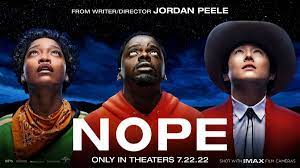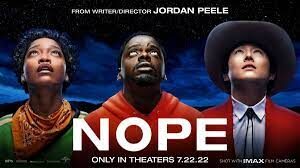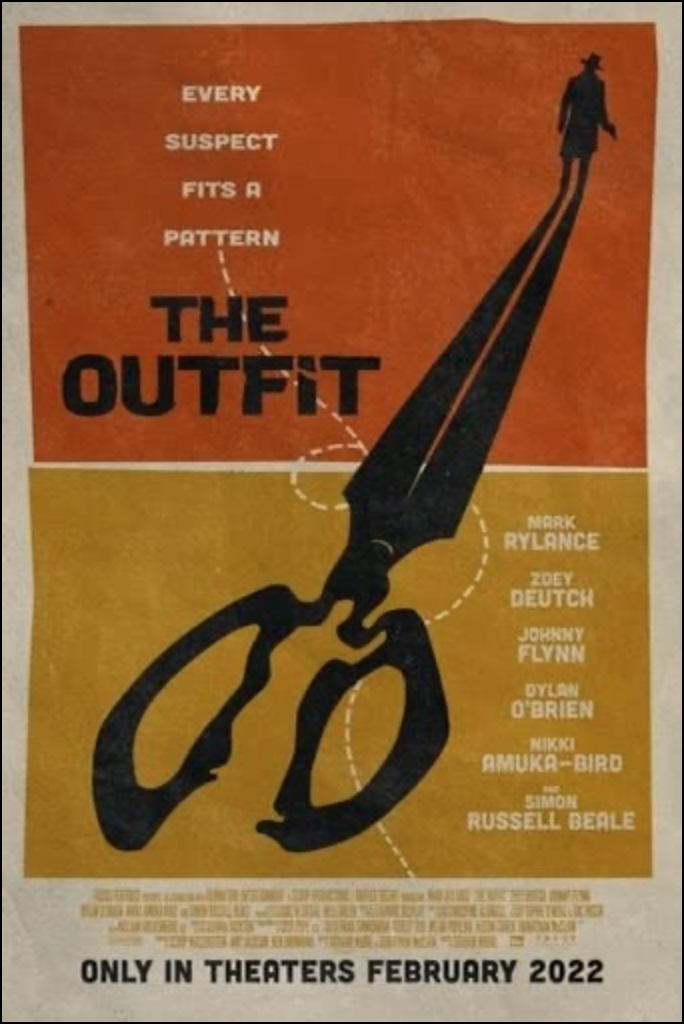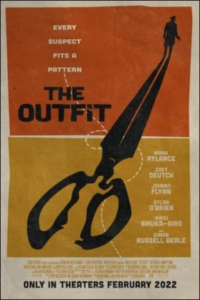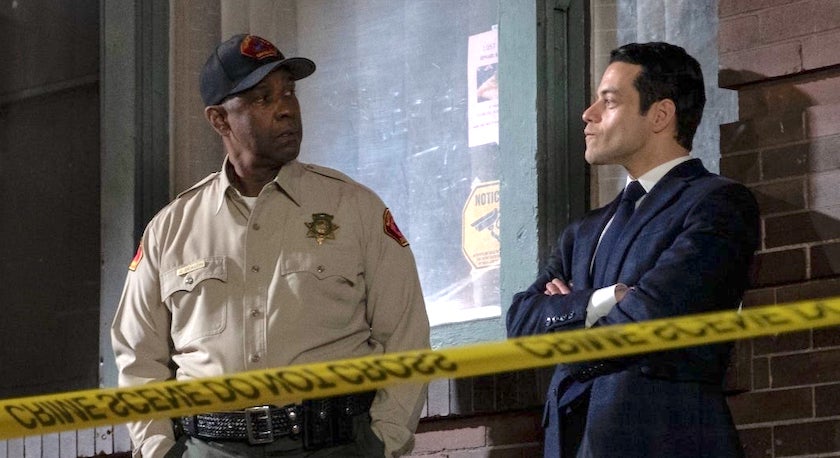Spin Me Round
Posted on August 18, 2022 at 5:25 pm
B-| Lowest Recommended Age: | High School |
| Profanity: | Very strong language |
| Alcohol/ Drugs: | Alcohol |
| Violence/ Scariness: | Intense peril, characters injured, some graphic images |
| Diversity Issues: | None |
| Date Released to Theaters: | August 19, 2022 |

His latest film, “Spin Me Round” does not just star Alison Brie; she wrote it as well. She plays Amber, who has worked for nine years at an Italian Garden-style restaurant in Bakersfield, California, called Tuscan Grove. As the movie opens, we see the industrial operations of the restaurant chain, with Alfredo sauce squeezed out of pre-packaged bags onto microwaved all-you-can-eat pasta. Amber is very professional and respected by her colleagues. Her boss, played by Lil Rel Howery, has a surprise for her; he has submitted her name for a special study session in Tuscany sponsored by their parent company. and she has been selected. Amber is thrilled. She has never been to Europe and it looks like a fabulous adventure, and, maybe, with the possibility of romance.
But this is one of those stories that starts out like a Hallmark movie and turns into a Lifetime movie.
Amber is still in “please the customer” mode and determined to bring the same upbeat, can-do spirit that made her successful at the restaurant. So when things begin to go wrong after her arrival she is sunny and helpful. Another attendee is Deb (Shannon), pouting over a lost bag, and Amber offers to loan her anything she needs, modestly assuring Deb, “I overpacked.” It turns out they are not staying in the beautiful villa pictured on the website but in a generic little motel with no locks on the doors nearby. When asked to turn over their passports and stay within the compound, she agrees. The promised lessons on Italian culture and cuisine are dull and basic. One of the other attendees is an ambitious chef (Tim Heidecker) who wants to teach the others about haute cuisine and molecular gastronomy, but no one cares.
The founder of the Tuscan Grove is Nick (Alessandro Nivola, always great), a dissolute yacht-owning zillionaire with surface charm and, clear to us at least, no interest in anything but pleasure. His assistant, Cat (Plaza) wakes Amber up and takes her to Nick’s yacht. While the others are in a boring class about herbs, she is living a Cinderella dream.
But then things start to get weird. Some of the other participants disappear. Amber starts to investigate and the storyline and tone take a swerve.
The last 20 minutes and he ending do not make a lot of sense. It’s pretty random. The script may be more a role Brie wants to play than a story she wants to tell. But the performances are excellent, especially Shannon, Plaza, and Brie herself, all precise and consistent despite the shifts. Shannon is funny and scary as the volatile over-sharer, both with confidences and with Amber’s clothes. Plaza, as always, is a master of deadpan with an underlay of recklessness. She and Brie play off each other beautifully as Amber tries hard to be a “good girl” and is scared and a little thrilled at finding her tendency to go along leading her to cross some boundaries she would never have considered in Bakersfield. I hope Baena keeps this repertory company going.
Parents should know that this movie has very explicit sexual situations and nudity, including group sex, and very strong language. Characters drink alcohol. There is some peril and there are some graphic and disturbing images of injuries.
Family discussion: Is there a point where Amber should have asked more questions? Why was the kind of restaurant so important to the story?
If you like this, try: Baena’s other films

